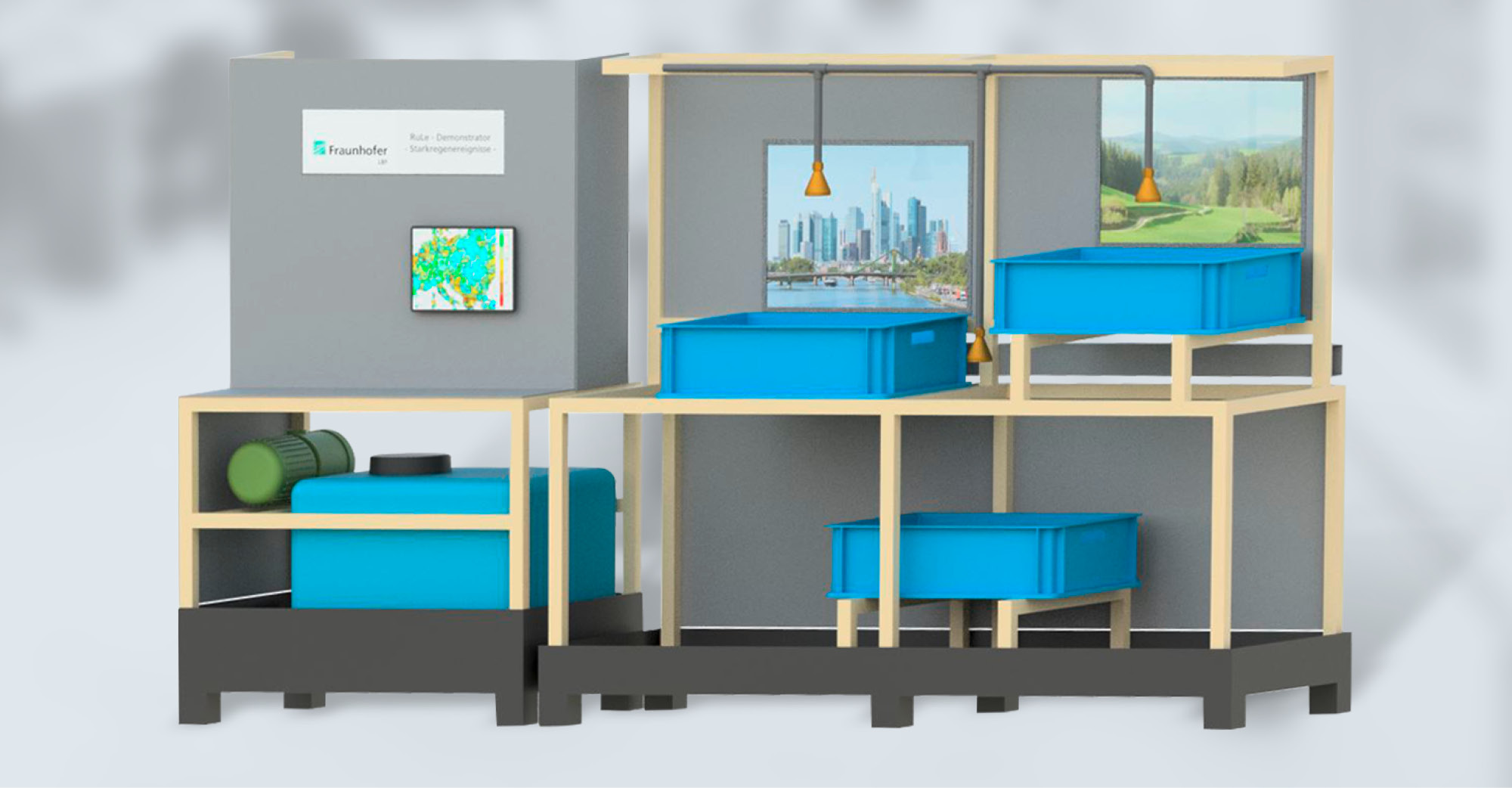RuLe: Resilience of urban areas


Seven Fraunhofer institutes working in the field of safety and security research have pooled their expertise and jointly launched the project “Resilience of Urban Areas” (abbreviated to “RuLe” in German). An integrated approach is being taken to build resilience in urban areas, encompassing physical infrastructure, organizational and data aspects (Fig. 2).
The aim of the project is to identify critical components of the urban infrastructure within an analytical framework, analyze their resilience in the face of adverse impacts and identify strategies for prevention and response. The contribution made by Fraunhofer LBF relates to the prediction and prevention of damaging events caused by heavy rainfall.
To be able to represent different scenarios on a smaller scale and to experimentally test suitable solutions, a functional demonstrator was developed and assembled at Fraunhofer LBF. This is a system with three flat areas that are artificially exposed to targeted rainfall and can release the collected water via various outlets (Fig. 3). The levels are staggered so that, for example, strategies can be investigated to reduce the negative effects of heavy precipitation in the mountains on existing infrastructure in the valley.
Using various sensors, the precipitation and runoff quantities are recorded at numerous points and sent to a central control system for evaluation. Depending on the scenario being demonstrated and the chosen strategy, electric drainage pumps may turn on or intentionally fail to operate.
What happens, for example, when storm drains are not regularly maintained and water runoff is impaired by fallen leaves? How can the resulting and fundamentally avoidable flooding of road surfaces be more effectively prevented? Is it sufficient to have only one pump for emergency drainage of a critical infrastructure or does the system need to be designed with redundancy to provide reliable protection? If this is the case, which components need to be duplicated?
To answer all these questions, the functional demonstrator allows the resilience evaluation models that have been theoretically developed at Fraunhofer LBF to be recreated and verified in practice. The system also serves as a development platform for new types of intelligent sensor technology designed to measure environmental parameters that previously had not been recorded at all or only very approximately. A drainage gutter that automatically detects contamination and independently reports a need for maintenance helps to reduce maintenance costs and at the same time reliably protects against flooding.